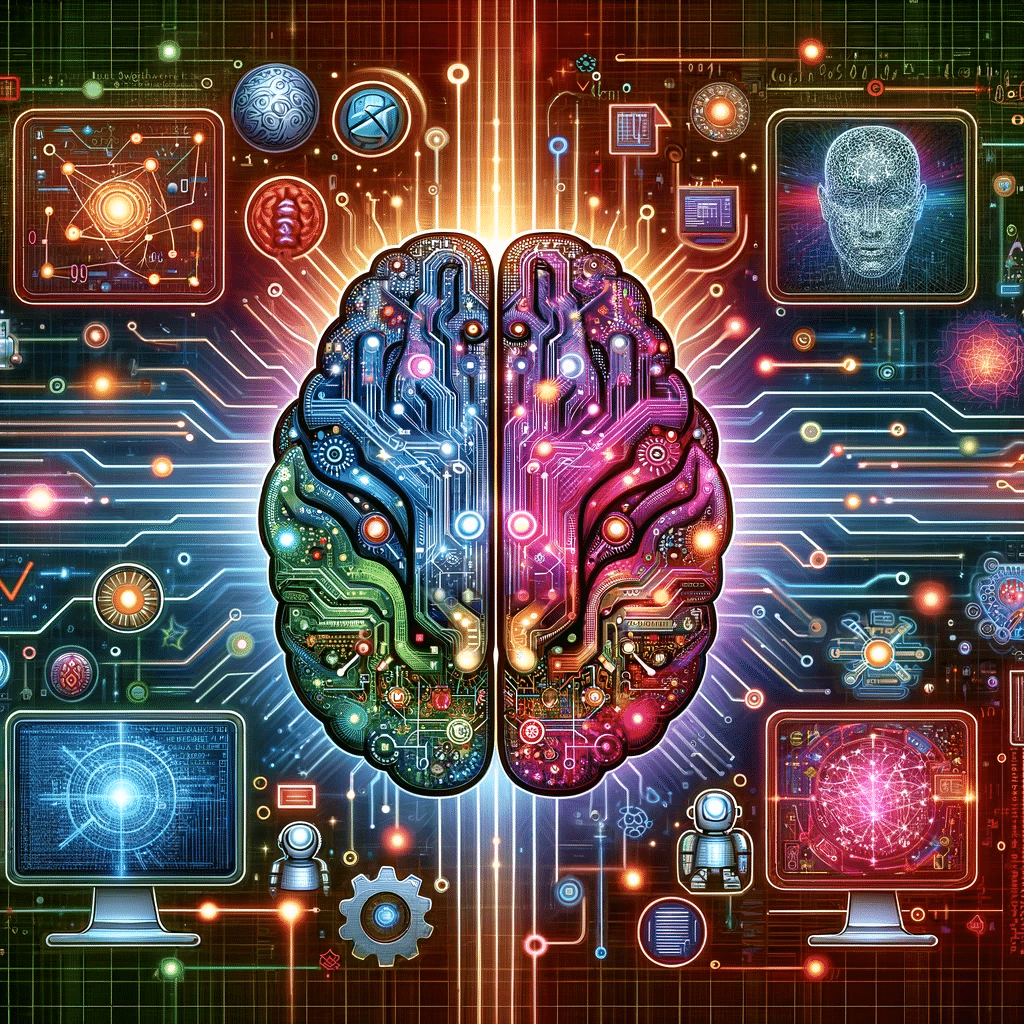Machine Learning (ML) is a subset of artificial intelligence (AI) focused on building systems that learn from and adapt to data autonomously. It’s a technology enabling computers to learn from experiences and make decisions without explicit programming.
The Evolution of Machine Learning
The concept of Machine Learning can be traced back to the mid-20th century. Alan Turing, a pioneer in computing, posed the question “Can machines think?” in 1950, which led to the development of the Turing Test to determine a machine’s ability to exhibit intelligent behavior. The official term “Machine Learning” was coined in 1959 by Arthur Samuel, an American IBMer and a pioneer in the field of computer gaming and artificial intelligence.

Key Features of Machine Learning
- Algorithms: ML algorithms are instructions for solving a problem or accomplishing a task, like identifying patterns in data.
- Model Training: Involves feeding data into an algorithm to help it learn and make predictions or decisions.
- Supervised Learning: The model learns from labeled training data, helps predict outcomes or classify data.
- Unsupervised Learning: The model works on its own to discover information, often dealing with unlabeled data.
- Reinforcement Learning: The model learns through trial and error, using feedback from its own actions and experiences.
Applications and Challenges
Applications
- Predictive Analytics: Used in finance, marketing, and operations.
- Image and Speech Recognition: Powers applications in security and digital assistants.
- Recommendation Systems: Utilized by e-commerce and streaming services.
Challenges
- Data Privacy: Ensuring the privacy of sensitive information used in ML models.
- Bias and Fairness: Overcoming biases in training data to ensure fair algorithms.
- Computational Requirements: High computational power needed for processing large datasets.
Comparative Analysis
| Feature | Machine Learning | Traditional Programming |
|---|---|---|
| Approach | Data-driven decision making | Rule-based decision making |
| Flexibility | Adapts to new data | Static, requires manual updates |
| Complexity | Can handle complex problems | Limited to predefined scenarios |
| Learning | Continuous improvement | No learning capability |
Future Prospects and Technologies
The future of Machine Learning is intertwined with advancements in:
- Quantum Computing: Enhancing computational power for ML models.
- Neural Network Architectures: Development of more complex and efficient models.
- Explainable AI (XAI): Making ML decisions more transparent and understandable.
Integration with Proxy Servers
Proxy servers can play a crucial role in Machine Learning in several ways:
- Data Acquisition: Facilitate the collection of large datasets from various global sources while maintaining anonymity and security.
- Geo-testing: Test ML models in different geographical locations to ensure their reliability and accuracy.
- Load Balancing: Distribute computational loads across different servers for efficient ML processing.
- Security: Protect ML systems from cyber threats and unauthorized access.
Related Links
For further information on Machine Learning, consider these resources:
- Machine Learning – Wikipedia
- Google AI Blog
- MIT Machine Learning Course
- Deep Learning Specialization by Andrew Ng on Coursera
This article provides a comprehensive understanding of Machine Learning, its historical background, key features, applications, challenges, and future directions, as well as its potential integration with proxy server technologies.




